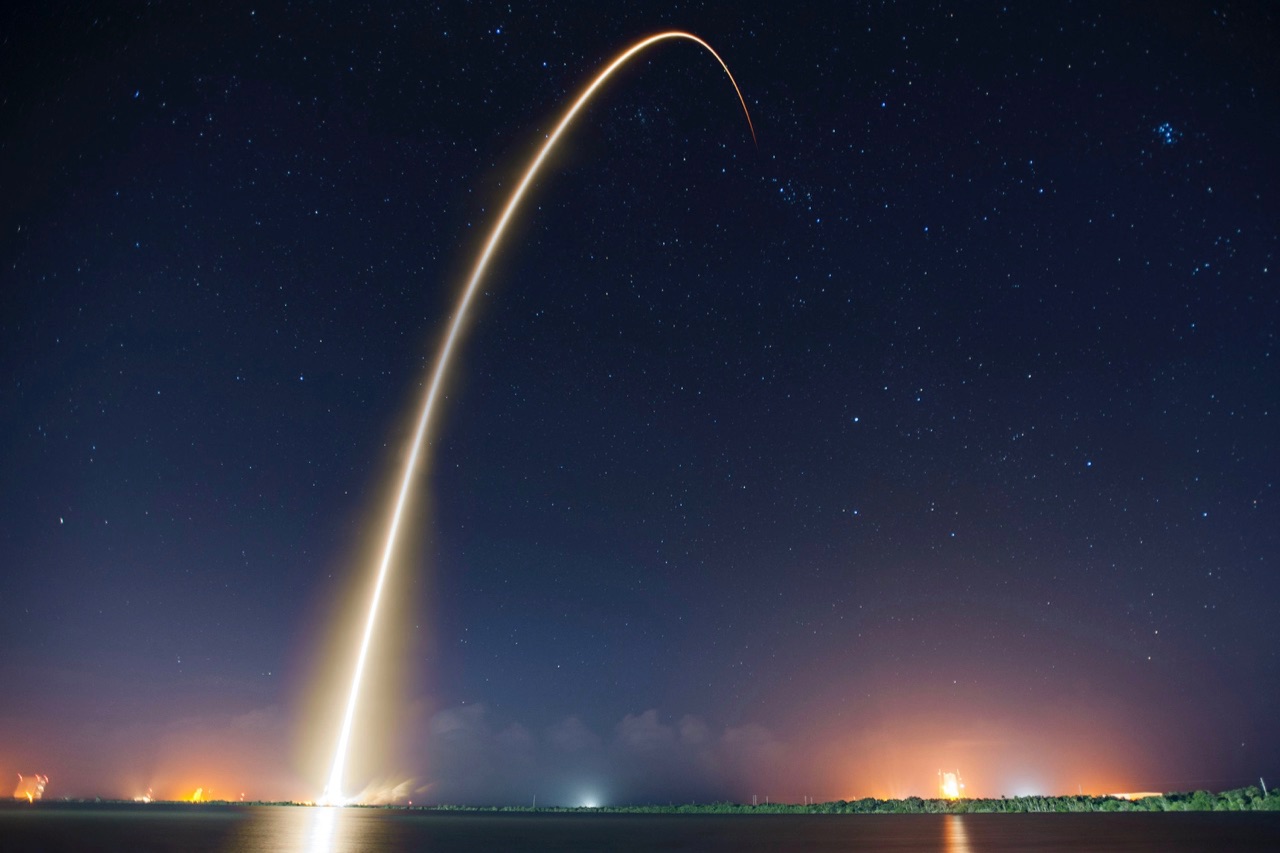There’s a new space race happening right now and the stakes are just as high as they were half a century ago. Companies such as SpaceX, Amazon, OneWeb, and Telesat are racing to launch large systems of low earth orbit (LEO) satellites to provide Internet access. These LEO “constellations” could help bridge the digital divide, particularly in rural regions. But they could also put Internet access into the hands of a few large companies and introduce new security and privacy concerns.
Will these LEO satellite systems help us build an open, globally connected, secure, and trustworthy Internet for everyone?
In the past, satellite Internet access has been provided primarily by geostationary satellites. These “GEO” satellites orbit around 36,000 km from the surface of the Earth and move with the planet, covering a fixed region. However, this distance introduces latency that can be as much as 400-700 milliseconds for a roundtrip. This works okay (but slowly) for viewing web pages, but doesn’t work as well for streaming video, real-time communications, gaming, and other activities needing fast connections.
Advances in space technology have enabled satellites in low earth orbit (LEO), under 2,000 km from the ground, to provide Internet access that is faster and higher capacity. But, these systems are far more complex. Because they are orbiting close to the planet, they are always in motion relative to the ground and are not fixed over a location. Instead you need many LEO satellites to provide coverage. Some companies providing LEO Internet access are launching hundreds, thousands, and even tens of thousands of satellites!
The Internet Society’s Low Earth Orbit Satellites project will explore the pros and cons of LEO satellite systems for addressing the digital divide—and what factors policymakers and technologists should think about when examining LEO systems. Here’s our plan:
- Internet Society staff will engage in research to answer key questions and develop a draft position statement about LEO systems.
- The position statement will be shared with our member community through our Policy Development Process (PDP) for feedback and comments.
- We’ll incorporate appropriate community feedback and arrive at a position statement.
- We’ll publish that position statement on our website and share it with our members.
The end result will be information that you and others will be able to use to talk about LEO satellite systems with people in your regions and governments. We’re in the research phase now, and we anticipate having a draft position statement to share by April 2022.
Getting Involved
Internet Society members can join our LEO project community. (Membership is free to everyone and easy to sign up for!) This community will play an important role in helping all of us learn more about LEO systems, working toward a shared position on LEO systems for Internet access. In the community, you will share information, links, and articles.
More importantly, we want your feedback and information—particularly with our global network of chapters. We want to learn how LEO systems are being considered and used in all parts of the world. Everyone is invited to participate in the community!
You can also get involved when the draft position statement is shared with our community for comment. We’ll have a three-week period where we’ll ask members to provide feedback. As always, all members are welcome to contribute.
Finally, if your organization is active in the LEO satellite space, or the other infrastructure areas that support LEO systems, our team would love to talk to you as we dive into our research and seek all viewpoints. Your company can also become an Organization Member to be more involved in building a bigger, stronger Internet for everyone.
We’re very excited to learn more about the impact of LEOs and we look forward to working with our members everywhere to get to a shared view of how LEO systems might help us connect the unconnected and grow the Internet. If you have any questions about this work, I’m leading the LEO project and you can reach out to me directly at [email protected].
Image credit: SpaceX on Unsplash

